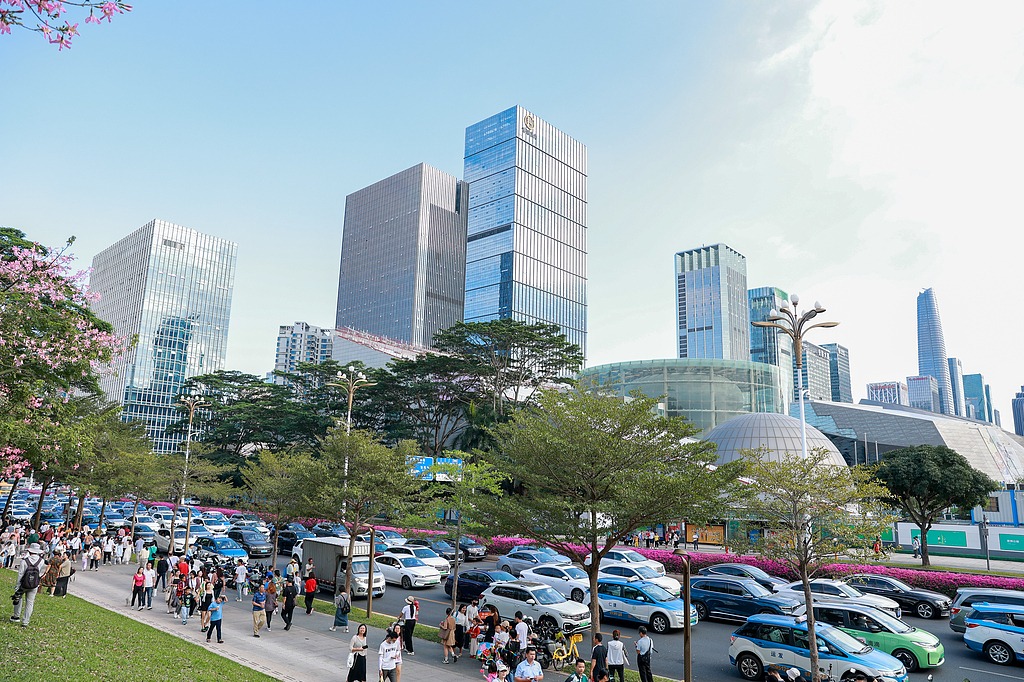Heritage status sought for central axis
By Wang Kaihao | CHINA DAILY | Updated: 2022-08-08 10:14

Beijing's bid seeks to further bolster city's status as national cultural center
The Beijing Central Axis is to seek UNESCO World Heritage status at the World Heritage Committee in 2024, the National Cultural Heritage Administration announced on Sunday.
"The bidding process will provide impetus for the protection of heritage and further promote Beijing's status as a national cultural center," Li Qun, director of the heritage administration, said during a conference for the conservation of historic cities.
"This (the bid) is an opportunity to advance comprehensive conservation of this ancient city," he said during an online speech addressing the meeting.
The Beijing Central Axis refers to a 7.8-kilometer-long north-south line down through the center of the historical neighborhood of Beijing, which generally follows a symmetrical structure.
The central axis was gradually formed starting from the Yuan Dynasty (1271-1368), when Beijing became the national capital. The basic layout of the current historical neighborhood of the city was structured particularly after the massive urban construction in the early 15th century during the reign of Zhu Di, the third emperor of the Ming Dynasty (1368-1644).
Many key historical sites from the Ming Dynasty are located along the central axis, such as the Forbidden City-China's imperial palace from 1420 to 1911, also known as the Palace Museum-the Temple of Heaven, Zhengyang Gate (Qianmen), and the Bell and Drum towers, but there are also modern-era structures like the Monument to the People's Heroes built in the 1950s.
In 2012, the National Cultural Heritage Administration first proposed including Beijing Central Axis on the World Heritage List, with its 14 current sites, including Jingshan Hill, the Imperial Ancestral Temple and Tian'anmen Square.
Some spots on the central axis, like the Forbidden City and the Temple of Heaven, have already been included on the World Heritage List, but Lyu Zhou, director of the National Heritage Center of Tsinghua University, emphasized the importance to see the landmarks as a whole.
"The Beijing Central Axis reflects the long lineage of Chinese civilization and how it developed throughout history," Lyu, also the leading expert drafting the bidding documents, said at the conference in Beijing on Sunday.
"It showcases urban structures and architectural forms that are based on traditional Chinese culture, values and aesthetics," he explained. "We can see how ancient Chinese society built their ideal capital cities."
For example, construction of Beijing in the Ming Dynasty followed the Rites of Zhou, a Chinese book on organizational theory that dates back over 2,200 years.
"The axis is a testimony of traditional rituals that have been highlighted by Chinese people," Lyu said.
Shan Jixiang, an urban designer and expert on cultural heritage protection and director of the Palace Museum from 2012 to 2019, said the Beijing Central Axis perfectly combines different sectors of a city in a continuous skyline.
For example, the southern part of the axis was a business district in history and ancient urban life can be vividly seen, while the northern part across the former imperial city witnessed cultural splendor, and over 1.86 million cultural relics are now housed in the Palace Museum.
"Fortunately, after such a long time, the skyline of this central axis is well preserved," Shan said. "It still stands like a backbone of Beijing.
"Seeking World Heritage status is our goal, but it's not our ultimate purpose," he said. "We'd like the historical monuments to live long, healthily and with respect, and for modern residents of the city to be inspired by their legacies."
The Beijing city government has spent much effort in recent years to improve the environment along the central axis in preparation for the bid for World Heritage status.
For instance, the historical landscape of the area surrounding the Temple of Heaven is being gradually renovated, and a park near the southern end of the axis opened to the public last week. Some archaeological programs are also ongoing to better reveal the history of the axis, according to Lyu.
A citywide rule on the protection of the central axis will take effect on Oct 1.
"In a world of change, World Heritage is a reminder of all that unites humanity," Lazare Eloundou Assomo, director of UNESCO World Heritage Center, said in an online speech on Sunday. "We have the shared duty to safeguard the exceptional heritage of humanity for the benefit of future generations."
China has 56 World Heritage Sites. Seven sites are located in Beijing, making the Chinese capital the city with the most World Heritage Sites in the world.
























